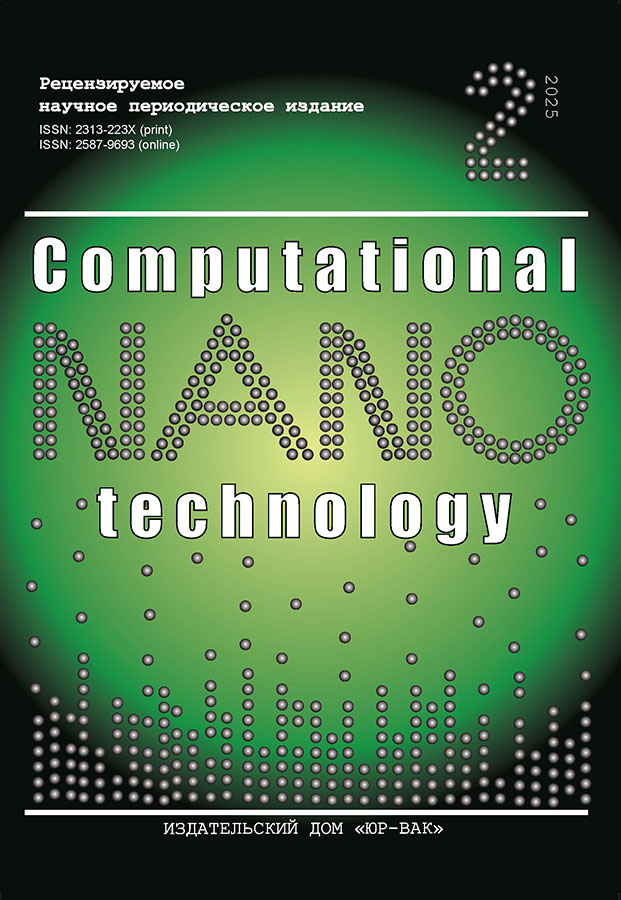Algorithmic methods of event-based predictive quality control of complex data processing systems: integration of system analysis and computational modeling
- 作者: Samokhina N.S.1, Efremov A.S.1
-
隶属关系:
- Volga Region State University of Service
- 期: 卷 12, 编号 2 (2025)
- 页面: 75-81
- 栏目: Computer modeling and design automation systems
- URL: https://journals.eco-vector.com/2313-223X/article/view/689229
- DOI: https://doi.org/10.33693/2313-223X-2025-12-2-75-81
- EDN: https://elibrary.ru/QWZBHA
- ID: 689229
如何引用文章
详细
The purpose of this research is to develop an algorithmic framework for event-forecast quality management in complex data processing systems (CDPS), through the integration of systemic analysis methods and computational modeling. Contemporary approaches to quality assessment, based on static metrics defined by GOST R 59797–2021, fail to account for dynamic emergent properties and predictive operational scenarios of CDPS. The study proposes a hybrid model that combines multi-level system analysis with L-stable numerical simulation techniques, enabling formalization of the “event-forecast quality level” as a function of temporal system parameters. The developed algorithmic framework includes a three-tier data aggregation architecture with adaptive weighting coefficients, a dynamic quality management system integrated into the CDPS lifecycle, a neural network module for preventive optimization based on reinforcement learning. Experimental validation on 15 industrial CDPS demonstrated improved critical event prediction accuracy up to 89.7% and reduced system response time from 15.3 to 2.7 seconds. Implementation within the control loop of a petroleum refinery reduced energy consumption per operation by 33% and increased service intervals by 27%. The originality of the work lies in the synthesis of relational analysis methods with deep learning neural architectures, ISO 25010 quality management principles with predictive analytics of rigid systems, real-time dynamic parameter adaptation using a modified (2,1)-method. Practical significance is confirmed by the integration of the algorithm into design, testing, and operation phases of CDPS, meeting the requirements of GOST R 59797–2021. Research outcomes are applicable to the development of fault-tolerant control systems for mission-critical infrastructure in energy, telecommunications, and finance. Future perspectives include adapting the algorithm for quantum computing systems and distributed IoT architectures.
全文:
作者简介
Natalia Samokhina
Volga Region State University of Service
编辑信件的主要联系方式.
Email: skipert.99@ya.ru
ORCID iD: 0009-0000-6829-8972
SPIN 代码: 8455-6622
Cand. Sci. (Eng.); associate professor, Department of Higher School of Advanced Manufacturing Technologies
俄罗斯联邦, TolyattiAlexey Efremov
Volga Region State University of Service
Email: efremov.aleksei@internet.ru
ORCID iD: 0009-0004-1386-0402
SPIN 代码: 6105-7077
postgraduate student
俄罗斯联邦, Tolyatti参考
- Arshinsky L.V., Lebedev V.S. Objectification of knowledge bases of intelligent systems based on inductive inference using non-strict probabilities. Information and Mathematical Technologies in Science and Management. 2022. No. 4 (28). Pp. 190–200. (In Rus.). doi: 10.38028/ESI.2022.28.4.015. EDN: LGJXFH.
- Vasiliev N.N. Modeling of bumping routes in the RSK algorithm and analysis of their approach to limiting forms. Information Control Systems. 2022. No. 6. Pp. 2–8. (In Rus.). doi: 10.31799/1684-8853-2022-6. EDN: WRCOSH.
- Veresnikov G.S., Golev A.V., Moskovtsev A.M., Martirosyan M.P. Methods and algorithms for solving the problem of early diagnostics of technical objects using data mining methods. Information Technologies. 2022. No. 9 (28). Pp. 475–484. (In Rus.). doi: 10.17587/it.28.475-484. EDN: UJWIRT.
- Desnitsky V.A., Novikova E.S. Fault detection in industrial products using small training datasets. VSU Bulletin. Series: System Analysis and Information Technology. 2024. No. 1. Pp. 49–61. (In Rus.). doi: 10.17308/sait/1995-5499/2024/1/49-61. EDN: DHNYCM.
- Dushkin R.V. Principles for solving the problem of symbol binding in the development of general-level artificial cognitive agents. Journal of Information Technologies. 2022. No. 7. Pp. 15–29. (In Rus.). doi: 10.17587/it.28.368-377. EDN: BZMVWL.
- Eremenko V.T., Loginov I.V., Fisun A.P., Rytov M.Yu. Control of restructuring of information and computing platforms of evolving cyber-physical systems under uncertainty. Bulletin of Computer and Information Technologies. 2023. No. 2. Pp. 26–36. (In Rus.). doi: 10.14489/vkit.2023.02.pp.026-036. EDN: HOSPS.
- Melnikov A.V., Kobyakov N.S. Numerical method for modifying models developed on the basis of the analytic hierarchy process using an artificial neural network. VSU Bulletin. Series: System Analysis and Information Technology. 2025. No. 4. Pp. 5–21. (In Rus.). doi: 10.17308/sait/1995-5499/2024/4/5-21. EDN: CENQIP.
- Menshikh V.V., Morozova V.O. Numerical Method for Studying Dynamic Series with Aperiodic Anomalies. VSU Bulletin. Series: System Analysis and Information Technologies. 2023. No. 2. Pp. 22–30. (In Rus.). doi: 10.17308/sait/1995-5499/2023/2/22-30. EDN: GVIANX.
- Popov A.P., Tikhomirov S.G., Khaustov I.A. et al. System analysis and synthesis of a predictive control system for the process of thermal-oxidative degradation of a polymer in a batch reactor. VSU Bulletin. Series: System Analysis and Information Technologies. 2020. No. 1. Pp. 36–50. (In Rus.). doi: 10.17308/sait.2020.1/2582. EDN: LLVDQL.
- Rezova N.L., Kazakovtsev L.A., Shkaberina G.Sh., Tsepkova M.I. Preliminary data processing for analyzing the behavior of complex systems. Control Systems and Information Technologies. 2022. No. 2 (88). (In Rus.). doi: 10.36622/VSTU.2022.88.2.008. EDN: BYGESB.
- Chukanov S.N., Chukanov I.S. Formation of machine learning features based on topological data analysis. VSU Bulletin. Series: System Analysis and Information Technologies. 2022. No. 3. Pp. 115–126. (In Rus.). doi: 10.17308/sait/1995-5499/2022/3/115-126. EDN: GEZXCX.
补充文件









